

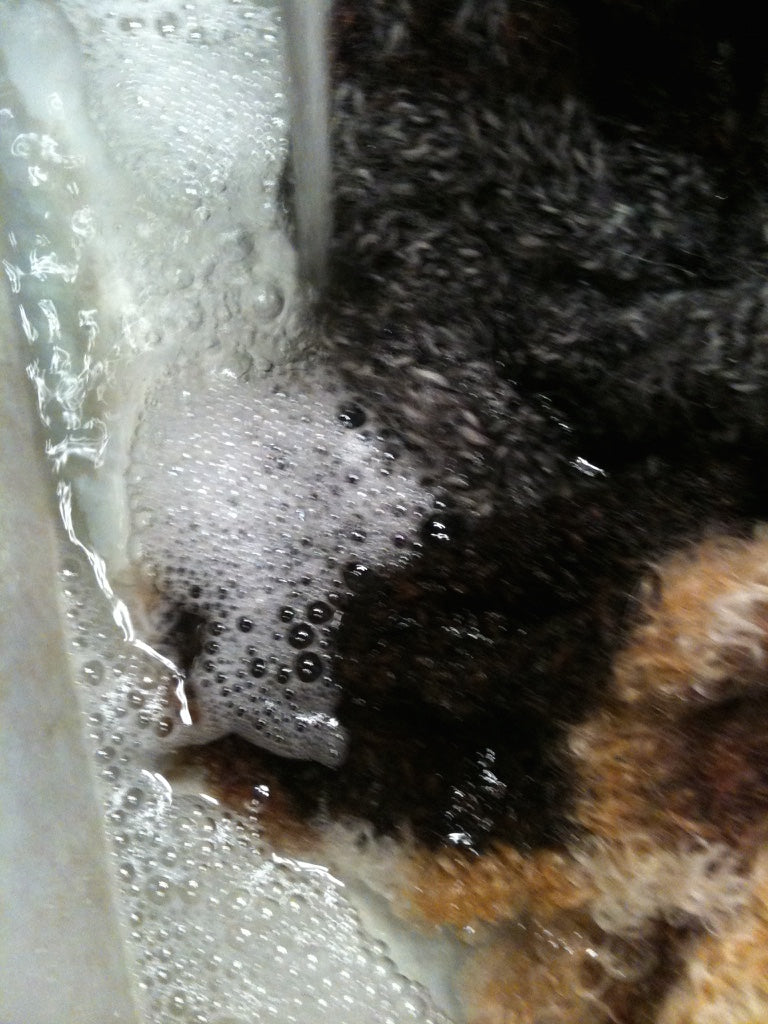
When do you hand wash laundry?
Hand Wash Laundry
Hand washing laundry is as old as the hills, and best for some types of fiber.
Clothing deemed as "delicate" are in this category for a few reasons. One is the actual fiber will become ruined when it is tumbled around and spun in a washing machine. Some natural wool is a great example. When handled too roughly in water where the temperature fluctuates between hot and cold too quickly, the wool will "shrink".
So will loosely woven plant fibers, such as cotton or linen. Sometimes, a silk garment will become permanently misshapen when put through a washing machine. Rayon and ramie are tree cellulose fibers, and will melt or shring when tumbled too much. Garments labeled "Permanent Press" (a synthetic fabric blend) last longer and keep their shape better when hand washed.
Stockings, nylons or silk stockings will be worn out after 1 or 2 wearings if you put them in a machine wash.
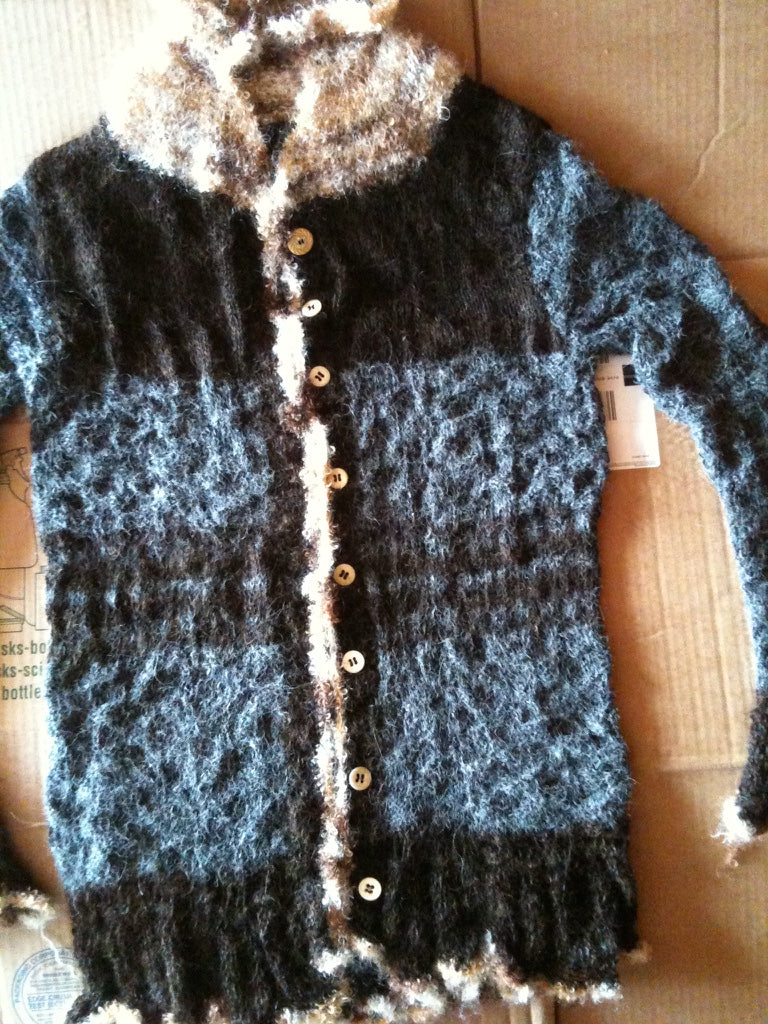
Hand knits and naturally dyed
Natural fibers
Items that are hand knit from any fiber, could last a lifetime if constructed well, and carefully hand washed. Hand dyed, especially hand dyed with natural plant dyes, will fade from the roughness of a washing machine combined with the harshness of synthetic detergents. These are best cleaned in a hand wash laundry and shade dried.
The hand washed, not yet blocked, sweater in the photo, is color grown alpaca, trimmed with goat angora.
Instant Liquid Soap is great for hand washing natural fibers such as wool, silk, linen, cotton, and any clothes you think of as "delicates". As a textile artist in my spare time, I work with a lot of wool and silk fabric, yarn and roving. I use natural plant based dyes and am also a wet felter. Our soap is gentle enough to leave the integrity of the fibers intact, but strong enough to clean.
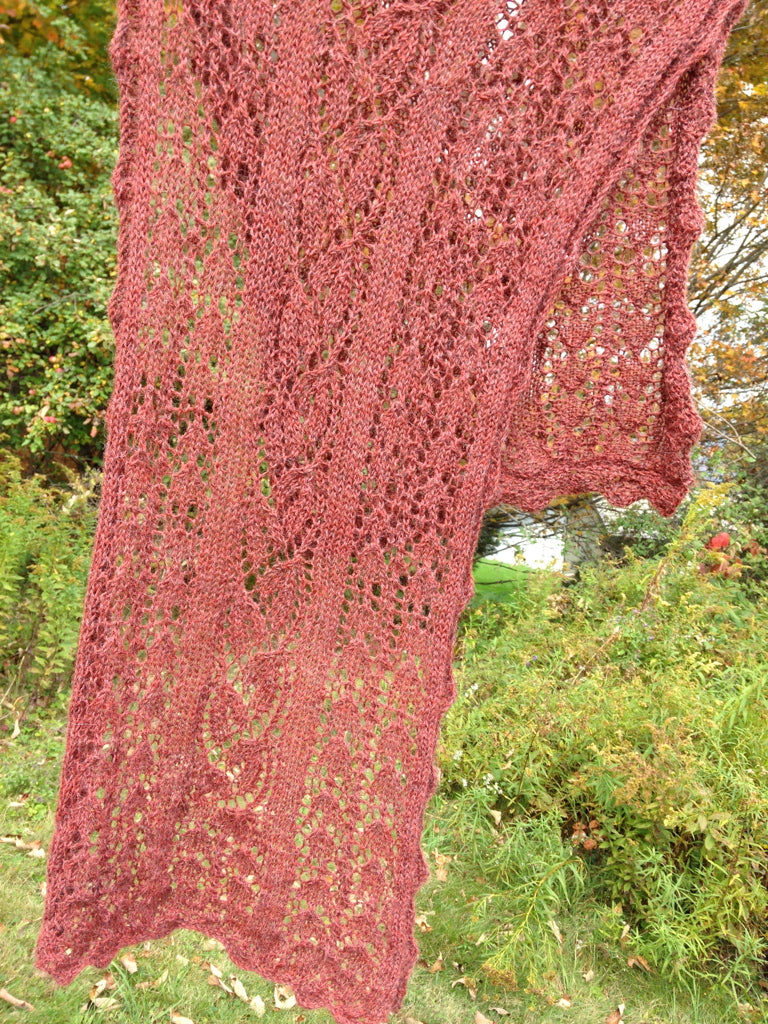
Hand Wash delicates
Instructions
Whether they are finished garments, or fibers in progress:
1. Fill a sink or wash basin with cool - lukewarm ish water. Add a generous amount of already diluted Instant Liquid soap. With your hands, swish the soap around in the water to spread it our and to get good suds.
2. Gently submerge your garments, yarn or whatever, making sure there is enough water for the fiber to move around freely. If the suds get eaten up immediately, your garments are a little dirtier than you thought (wool can be like that) and you may want to add a little more soap or gently do a preliminary wash, rinse and start again with fresh, clean water and soap. Soak for 30-60 minutes, gently moving the garments around to get the soap into the fibers. Do this 1 or 2 times.
3. Drain and squeeze garments. Avoid twisting garments, especially knits. That will stress and distort the garment's shape. Fill basin again with cool-sh water, submerge garments, and gently move them around. Repeat this 2-5 times to get all of the soap out.
4. Fill basin 1 more time and add some white vinegar - anywhere from 1/4 c to 2 c depending on how much fiber you are washing at one time. Add your rinsed garments, gently moving the garments around. Then let everything soak for 10 minutes. Rinse again.
5. Squeeze out all excess water. Lay a towel on the floor and lay garments on the towel. Roll it up and gently step on it. This easily squeezes out all of the water., without too mych agitation. Dry either laying flat or hanging depending on the garment.
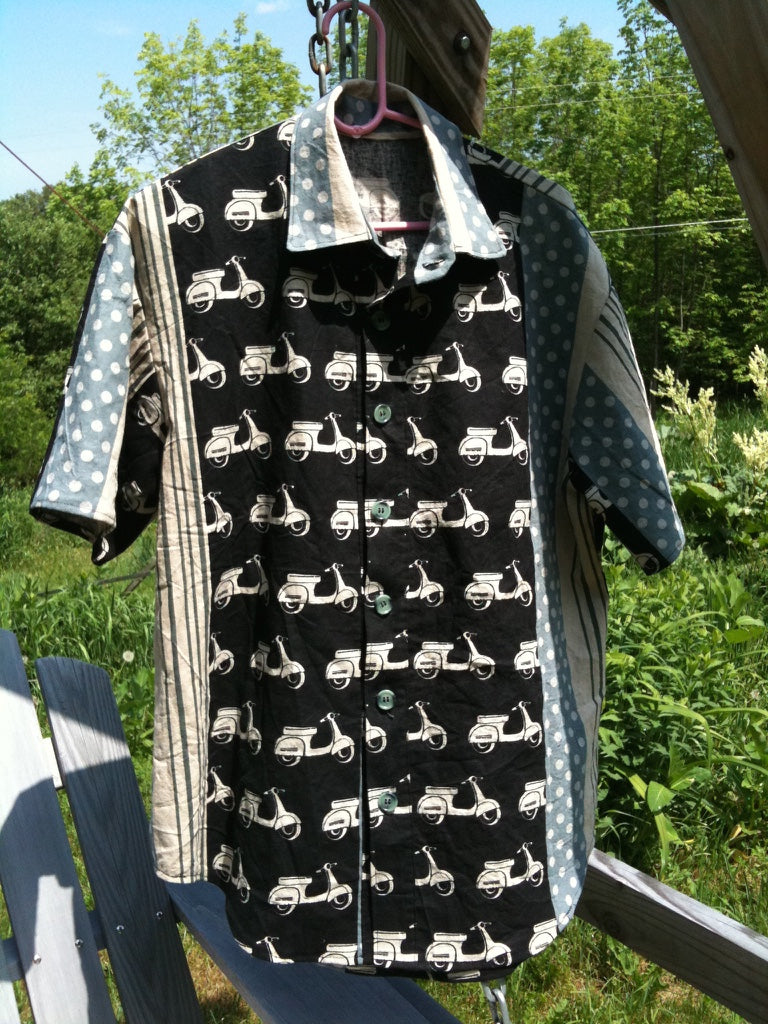
Hand knits vs woven fabrics
Hand wash hand sewn garments
Hand knits vs woven fabrics are best dried using different methods. Hand knits s should always lay flat to dry. Hanging them will stretch them out and they will become misshapen.
Tightly woven garments can be hung. However, loosely woven garments may stretch out the shoulders if hung on hangers. If hung on a clothesline, they may develop permanent clothespin dimples.
These garments should also lay flat to dry.
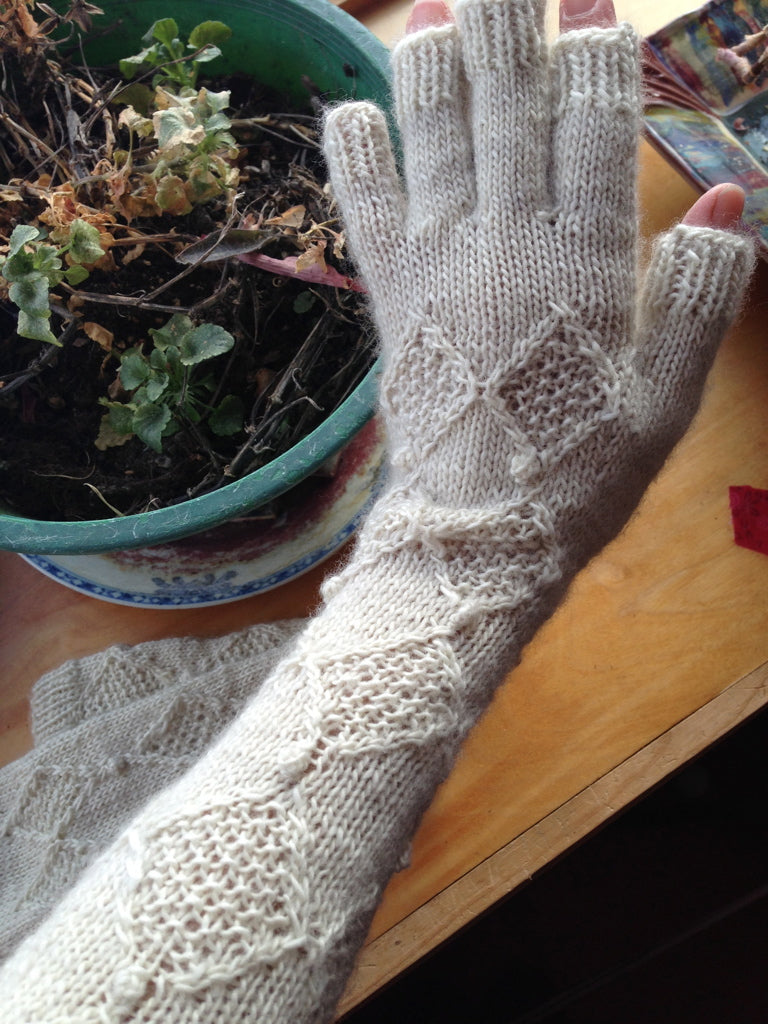
There are many kinds of wool
How to wash sheep wool
Merino wool has a lot of spring and memory, because of its short curly fiber. My special Falklands Island Merino has a 3 inch staple length, which is very long for a Merino. When it's doing its soak washing, it will activate the spring (curl) in the fibers and it will need to be blocked again. Wet wool can also get overstretched from the water weight. It is important, especially for hand knits, to make sure you get all of the water out. I have a front loader washing machine, and will sometimes spin my hand knit sweaters before blocking them, on a cool water setting.
What is blocking? Blocking is shaping your knits by hand, to highlight the garment shape and stitches, if there are lace and or cables.
Proper blocking will hold whatever shape you form it into, until the next washing. I use an iron on the wool setting to create steam on the wet wool which will aid in getting the shape to hold. When doing this take care to put very little pressure on on the wool. Too much pressure from a hot iron on wet wool will flatten out stitches and can cause the yarn to felt or permanently change its character.

Linen and cotton
Plant fibers
Linen has a mind of it's own. Some linen I wash in cold water in my washing machine. Hand sewn, heavy weight linen, like the scooter shirt pictured above, and loose weave light weight linen, I prefer to hand wash and hang dry.
You can iron the garment after it's dry using steam, but linen has a mind of its own and may not iron flat. I prefer to straighten out seams, hems, button plackets, pockets and cuffs by hand.
Cotton fiber has almost no memory, so when washing, be careful to not stretch it out too far. It will not spring back.
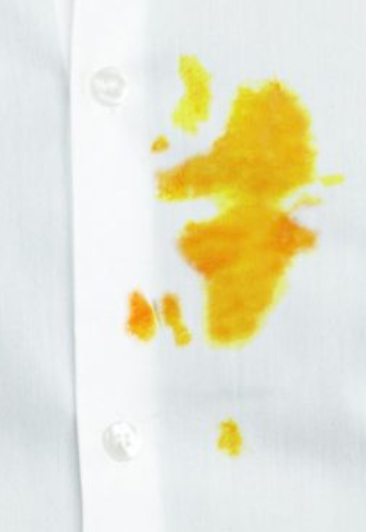
How to remove stains with Castile soap
Spot Wash
Coffee, turmeric and beets are tough ones, since they are water soluble dyes.
Click here to find out how to remove tough grease stains
I would try wetting the stain and rubbing in some liquid soap. Leave it for a few days. What I do is throw the garment into the wash after that.
If this doesn’t work, or you want to do something extra anyway, rinse off the soap, and smother the stain with baking soda. Gently rub the baking soda in and leave it spread out for a day or 2. The soda will absorb the stain out of the fabric, and turn brown. Rinse it off and throw the garment in the laundry or hand wash, depending on the garment. Wash normally.
Very Important: air dry garment
